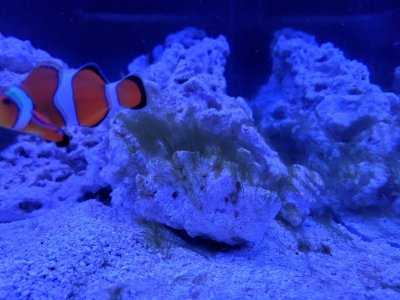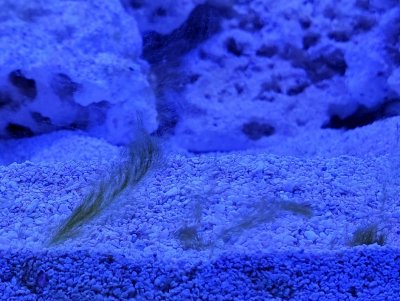Hello, I am new to Marine systems but I have quite a bit of experience with Freshwater tanks. I am stepping into this hobby with a 40 gal breeder with a 20 gal sump (drilled bulkhead overflow and return.) My tank finished cycling about 2 weeks ago and I have had an outbreak of algae that started basically the last week of the cycle. I was hoping it would diminish as other microorganisms took hold in the new system but it doesnt seem to have slowed down. I have tried shortening my light cycle (full strength is on for 4hrs a day) and its currently lit by a CurrentUSA Marine Orbit 36" LED. I have also done a bit of manual removal but it comes back with a vengeance within a week. This past week I have put Chaeto in my refugium with an LED refugium light in the hopes that it will reduce some nutrients but it doesnt seem to have had an effect yet.
Admittedly I have not purchased a Phosphate test kit so I cannot tell you what my phosphate levels are at the the moment. Its next on the list when I can get to the store. I was hoping someone could help ID this algae (is this the dreaded Bryopsis or just a Hair Algae?) so I can get a clean up crew to help with the management until I get this under control. I currently have 2 clowns in the tank as well as 5 Astrea Snails and 1 Nassarus Snail.
Any advice would be appreciated. Thanks.


Admittedly I have not purchased a Phosphate test kit so I cannot tell you what my phosphate levels are at the the moment. Its next on the list when I can get to the store. I was hoping someone could help ID this algae (is this the dreaded Bryopsis or just a Hair Algae?) so I can get a clean up crew to help with the management until I get this under control. I currently have 2 clowns in the tank as well as 5 Astrea Snails and 1 Nassarus Snail.
Any advice would be appreciated. Thanks.
















